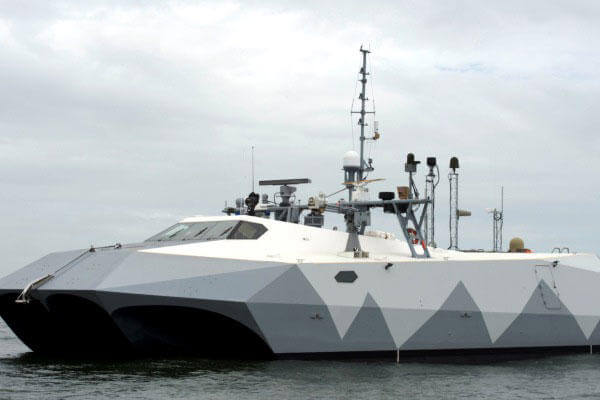Sailors and Marines with a good idea to improve the Department of the Navy have until Jan. 31 to apply to be part of the CNO's Rapid Innovation Cell for 2016.
Launched by former Navy Chief of Operations Adm. Jonathan Greenert in 2012, the cell cultivates junior officers and enlisted troops, introducing them to government and industry leaders and providing resources to develop their ideas.
Former members of CRIC, as it's called, have pioneered 3-D technology developments for the Navy, developed a renewable energy initiative that uses leftover food scraps to produce electricity at the United States Naval Academy, and used augmented reality technology to help sailors performing maintenance tasks.
In the three years the cell has been active, around half of the ideas presented by its members have gone on to help the fleet, according to John Hottendorf, deputy director of the Innovation Division of Naval Warfare Development Command.
"We probably have a 50-60 percent success rate [with ideas] that have transferred over to programs of record," he said. "We're staying true to Adm. Greenert's and [current CNO Adm. John Richardson's] principle of, fail often, fail early."
The cell has about 12-15 members at any given time, made up of junior officers and enlisted troops from around the fleet. When they travel to industry meetings and other events, they don civilian clothes instead of the uniform to foster an environment of collegiality that isn't hindered by rank or standing, Hottendorf said.
Members of the cell work on their project in addition to their normal military duties and communicate remotely to stay connected between designated events and travel days.
"They're Millennials, so they all text each other," Hottendorf joked.
While cell organizers try to maintain a balance of ranks and demographics, new members are chosen by the existing members themselves, said Cameron Cooper, a recruiter for CRIC.
"Generally they're looking for candidates that have demonstrated the ability to think actively ... who aren't hesitant to continue to pursue an idea even though they might not find people in support of their process," she said. "People who aren't afraid to fail."
Applicants should be at the O-4 rank and below and staying in the Navy stateside until Sept. 2018. They must be able to commit four days every other month to travel and participate in events, according to Navy officials. Cooper and Hottendorf noted that candidates also need to have an idea ready to work on. They will be judged for selection on the strength of their idea as well.
About 12 proposals will be selected for further refinement, and five or six projects will be ultimately selected for the cell in April 2016.
For more information, visit the CNO's Rapid Innovation Cell's Facebook page at www.facebook.com/NavyCRIC/.
-- Hope Hodge Seck can be reached at hope.seck@military.com. Follow her on Twitter at @HopeSeck.




























